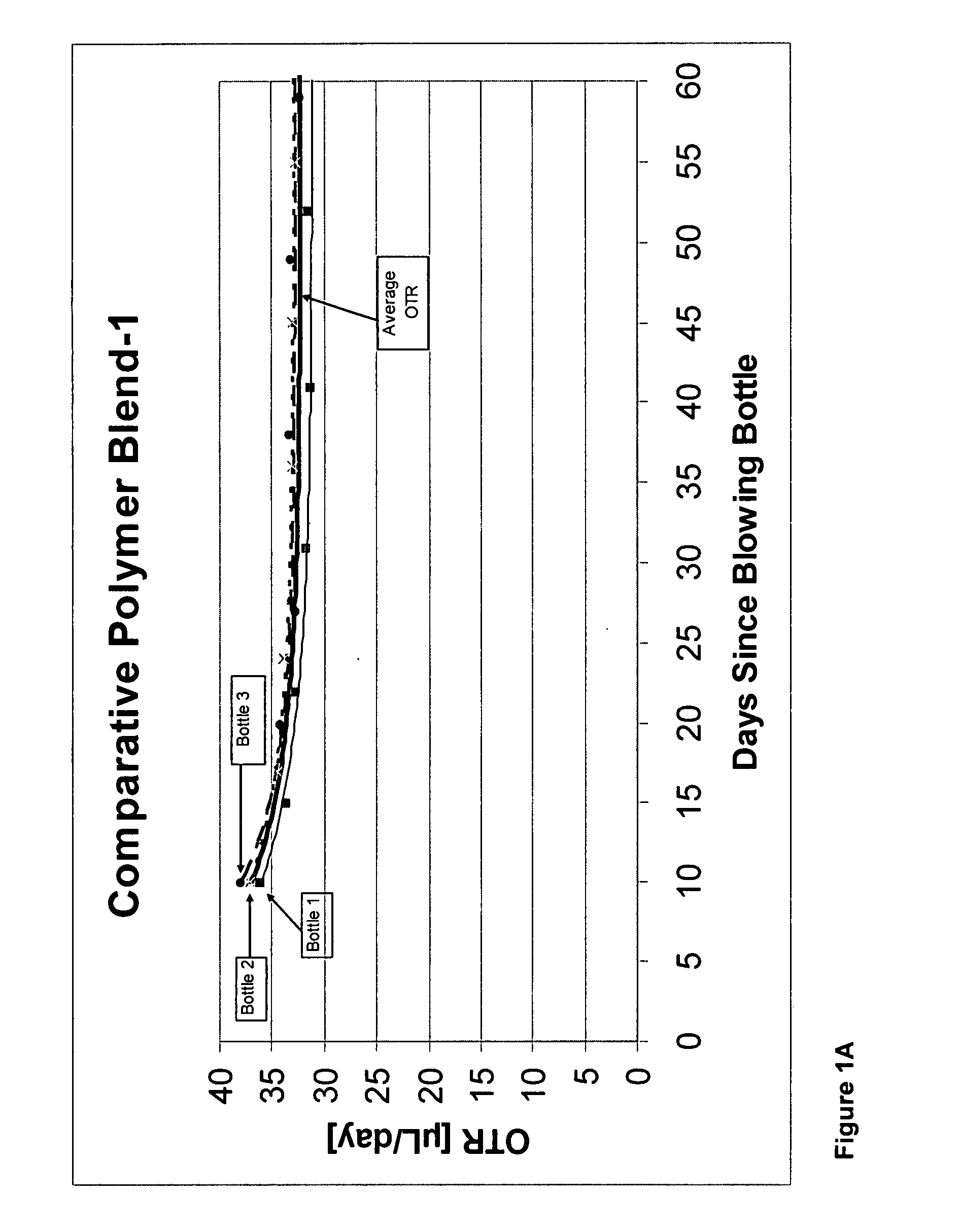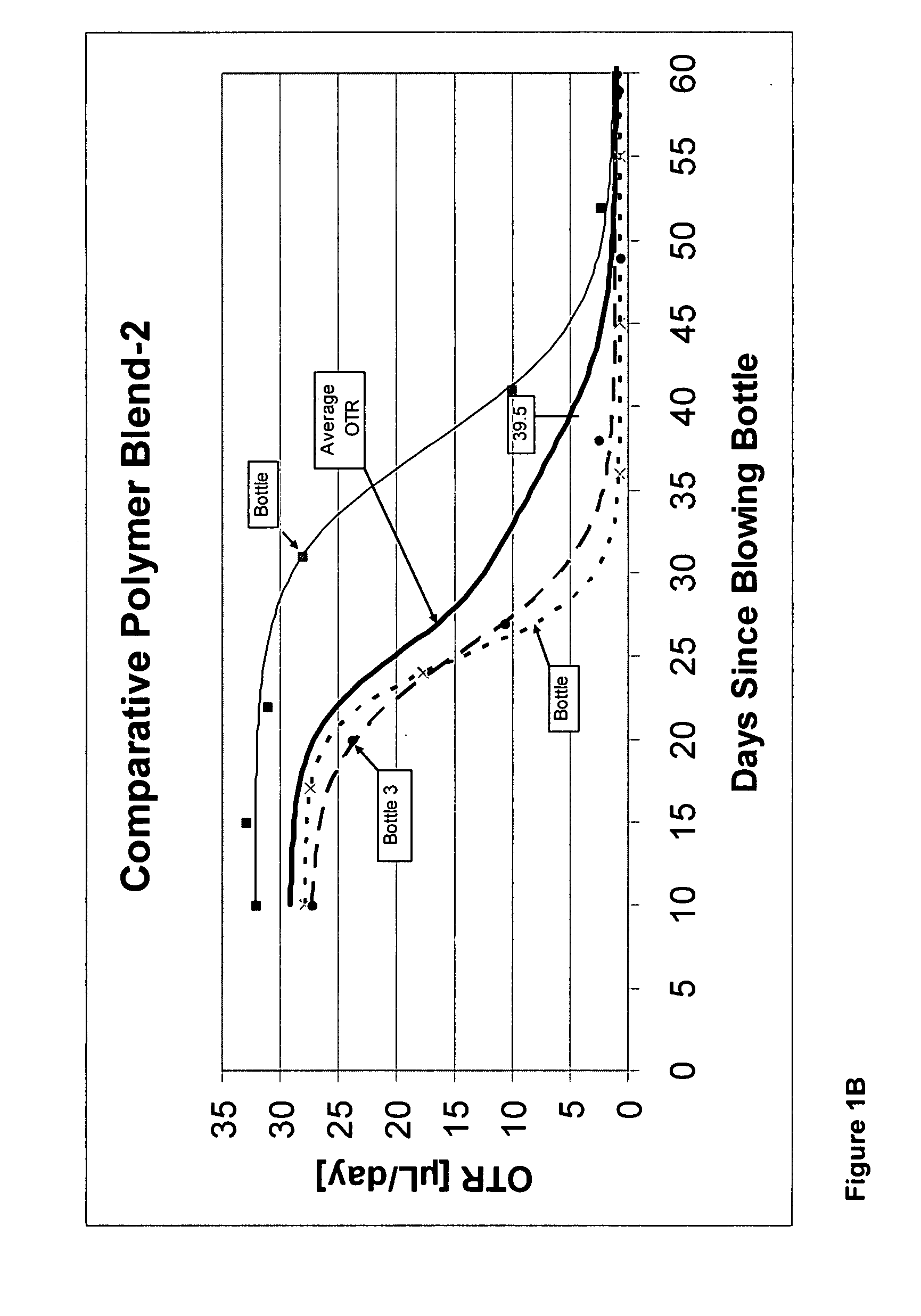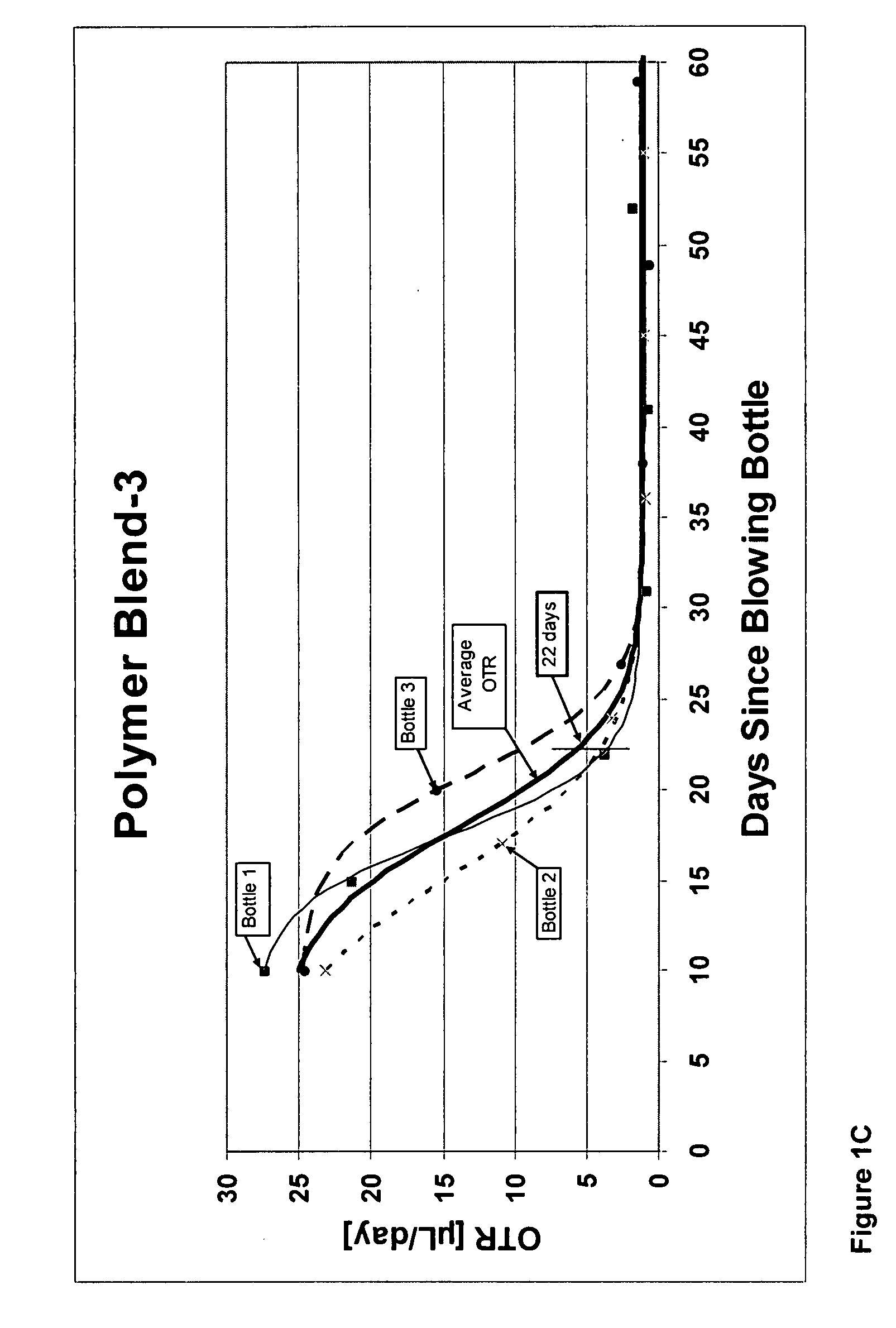Oxygen-scavenging polymer blends suitable for use in packaging
a technology of oxygen-scavenging polymers and polymers, which is applied in the direction of conductive materials, non-conductive materials with dispersed conductive materials, group 4/14 element organic compounds, etc., can solve the problem that the oxygen barrier properties of such polymers do not provide adequate protection for the produ
- Summary
- Abstract
- Description
- Claims
- Application Information
AI Technical Summary
Benefits of technology
Problems solved by technology
Method used
Image
Examples
example 1
[0240]In this example, four polymer blends were prepared (Polymer Blends 1-4), using the PET polymers described below. Note that Polymer Blends 3 and 4 differed even though the same PET polymer was used because different quantities of cobalt were added. The metal quantities given were determined by Inductively Coupled Plasma Optical Emission Spectroscopy (ICP) and are set forth in Table 1A.
[0241]PET-1 was a PET copolymer containing residues of dimethyl terephthalate, ethylene glycol, and cyclohexane dimethanol, with cyclohexane dimethanol residues representing about 1.7 mole % of the diol residues. The polymer contained about 210 to 240 ppm antimony, about 85 to 95 ppm phosphorus, about 50 to 60 ppm manganese, and about 15 to 25 ppm titanium, all provided as catalysts; and further contained an iron-containing reheat additive, a UV dye, and red and blue toners. PET-1 was prepared by first transesterifying the dicarboxylic acid esters and diols in the presence of the manganese, antimo...
example 2
[0283]Below is a description of the PET polymers used to prepare each of Polymer Blends 5 through 8. Polymer Blends 7 and 8 differ even though the same PET polymer was used because different quantities of cobalt were added to the same PET-4 polymer. The metal quantities in Polymer Blends 5 through 8 were determined by Inductively Coupled Plasma Optical Emission Spectroscopy (ICP) and are set forth in Table 2A.
[0284]PET-1 is the same as previously described in Example 1.
[0285]PET-2 is the same as previously described in Example 1.
[0286]PET-4 was a PET copolymer containing residues of terephthalic acid, ethylene glycol, and isophthalic acid, with isophthalic acid residues representing about 2.9 mole % of the dicarboxylic acid residues; contained about 8 to 14 ppm Al, about 6 to 10 ppm Li, and about 52 to 63 ppm phosphorus, provided as a catalyst system; and further contained a reheat additive and red and blue toners. PET-4 was prepared by melt-polymerizing the dicarboxylic acids and d...
example 3
[0298]Below is a description of the PET polymers used to prepare each of Polymer Blends 9 through 16. Comparative Polymer Blends 9 and 16 and comparative Blends 10 and 15 differ in the carrier resin used to introduce the cobalt (Table 3A). Also, Polymer Blends 12 and 13 differ, even though the same PET polymer was used, because different quantities of cobalt were added to the same PET-5 polymer. The metal quantities in Polymer Blends 9 through 16 were determined by Inductively Coupled Plasma Optical Emission Spectroscopy (ICP) and are set forth in Table 3A.
[0299]PET-1 is the same as previously described in Example 1.
[0300]PET-2 is the same as previously described in Example 1.
[0301]PET-3 is the same as previously described in Example 1.
[0302]PET-4 is the same as previously described in Example 2.
[0303]The cobalt concentrate is the same as previously described in Example 1.
[0304]The “Alternative” cobalt concentrate was a solid concentrate prepared by melt-blending 2.22 wt percent cob...
PUM
| Property | Measurement | Unit |
|---|---|---|
| Fraction | aaaaa | aaaaa |
| Fraction | aaaaa | aaaaa |
| Fraction | aaaaa | aaaaa |
Abstract
Description
Claims
Application Information
 Login to View More
Login to View More - R&D
- Intellectual Property
- Life Sciences
- Materials
- Tech Scout
- Unparalleled Data Quality
- Higher Quality Content
- 60% Fewer Hallucinations
Browse by: Latest US Patents, China's latest patents, Technical Efficacy Thesaurus, Application Domain, Technology Topic, Popular Technical Reports.
© 2025 PatSnap. All rights reserved.Legal|Privacy policy|Modern Slavery Act Transparency Statement|Sitemap|About US| Contact US: help@patsnap.com



